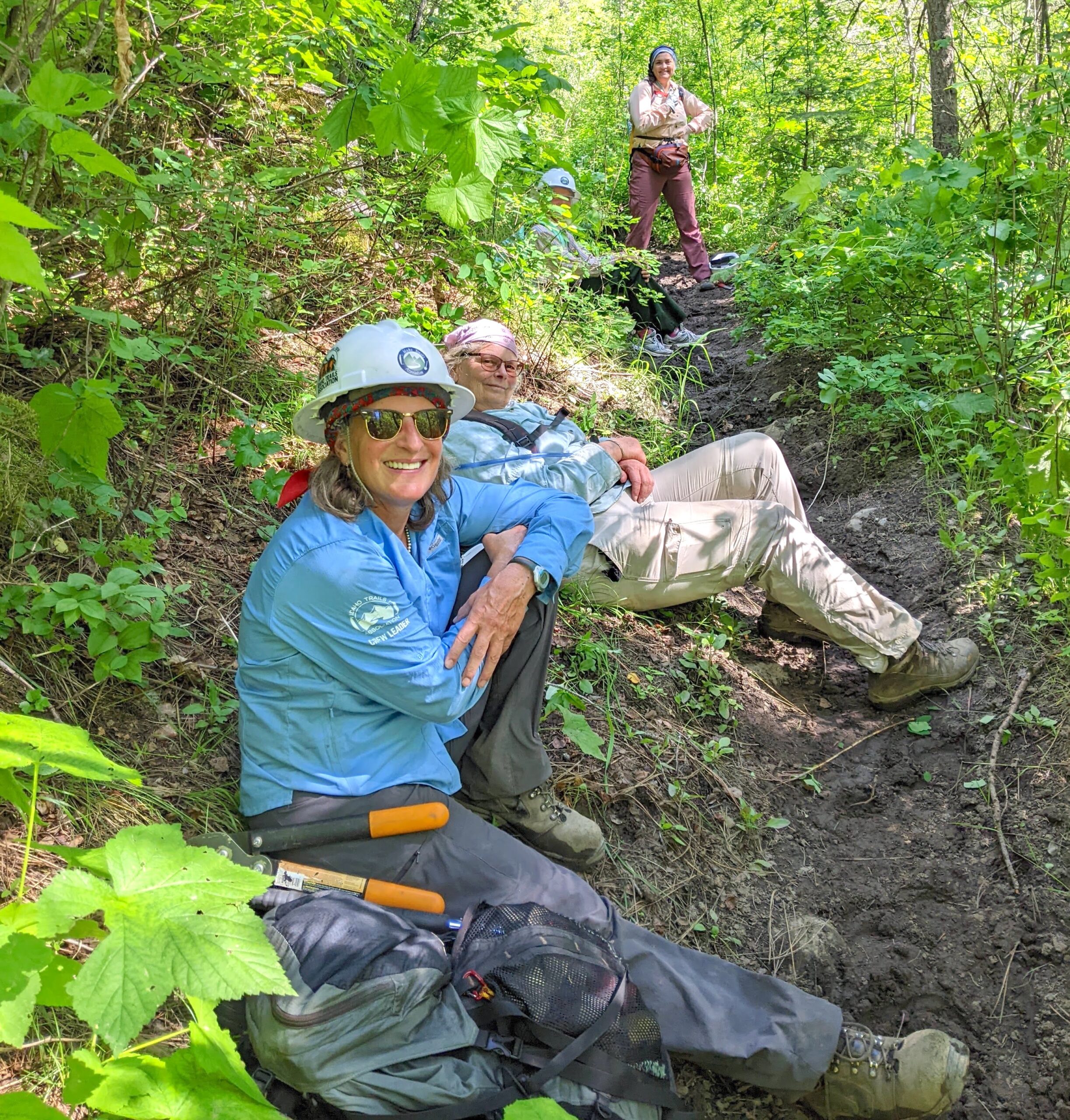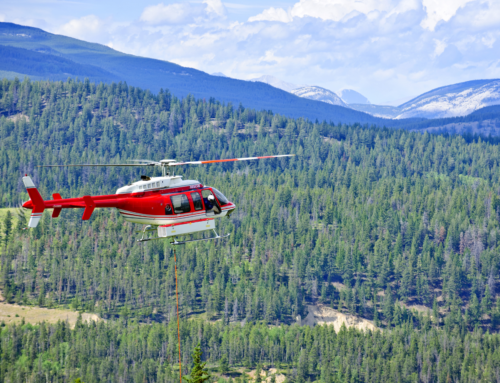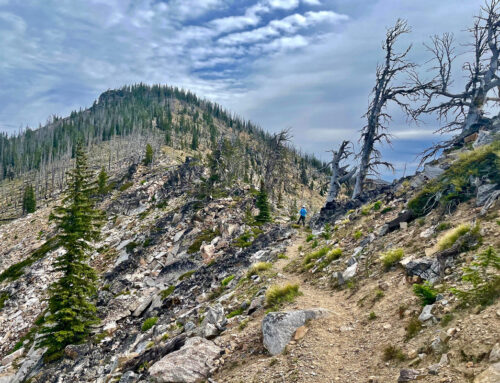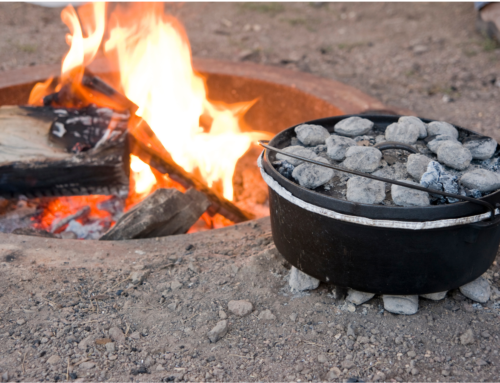
Liz (front) leading a crew on the recent Selway River- Women Only Project
What does Liz not do for ITA?! She serves as a crew leader, Advisory board member, youth program advocate, backcountry cook, event volunteer, writer, and host of ITA functions in her amazing backyard among many roles! Liz is so much fun to be around and brightens up any trail project she attends. We are so grateful for her enthusiasm for all things trails and getting new volunteers interested in working on our public lands. Thank you so much for all you do for ITA, Liz!
What is your background in? What are some of the things you enjoy doing for fun?
I studied geography at school in Montreal and Boulder, and was involved as a research assistant in many projects that initially were couched as climate change studies, of El Nino storm cells, polar ice patterns, polar ice circulation, solar radiation… It is exciting to see many of those projects have become critical parts of understanding the dynamics of global warming by people wiser and more dedicated than me. But I have always been a hiker, introduced to the mountains at a young age by my father and mother. For fun I read, and I walk, usually in the company of dogs. I love rafting and skiing, downhill, Nordic and backcountry, and traveling to places where I have to learn a new language to get by.
How and why did you first get involved with ITA? What are the different ways you’ve volunteered for ITA over the years?
I first got involved with ITA when I was a teacher. I would sit on a sofa in the hallway before class, and often a student of mine would sit with me, having arrived at North from her dance classes at Boise High. One day I asked her what she had done for Spring Break and she told me she had cleared a trail along the Middle Fork of the Salmon. I was super excited and told her that I had long dreamed of getting my students out of the classroom and into the wild, connecting with nature and wilderness in a meaningful way. She brokered a meeting between her father, a board member of ITA, and the then director of ITA, and we arranged the first Youth Project for ITA, a dream of mine fulfilled! Since then I have developed backcountry menus for ITA, cooked for various projects, worked on projects and led projects. I made a great connection with Ridge to Rivers and their volunteer coordinator, and am grateful to see how involved ITA members now are with local trail initiatives. I have the privilege of writing thank you letters to some of the great people who join and support ITA, I go to fund raising beer bashes, and do what I can to support ITA and all its incredible members.
What do you like about volunteering with ITA?
What I most like about ITA is meeting and working alongside a giving, caring, interesting and sweaty group of outdoorsmen and women. I love, as a geography and history teacher, being a part of the thousands of years of people who have traveled the trails of what is now known as Idaho. And I love giving back, after a good life of trail traipsing. It feels good to leave a mark, even knowing that mark will be erased over time.
Most memorable backcountry or ITA experience?
On the first teen trip I led, I had a couple of my students who had conveyed to me in class, during a discussion of cultural taboos and traditions, their reluctance to poop in the wild. I knew it would be a long and uncomfortable week for them if they didn’t get over their inhibition, so once in the backcountry, I gave them the job of digging a latrine for the group for the week, with no instruction. They returned after a good hour, dusty, sweaty and grinning, pulaskis proudly poised by their sides. “Do you want to see it?” they asked. I can assure you, no one had a retention problem the rest of the week, as the pit they dug would have made a great tiger trap, if there were tigers in Idaho, and certainly scared the poop out of many of us as we perched over the pit.
Why are trails worth protecting?
I can get very philosophical over the question, “Why are trails worth protecting?” Briefly, the history of a trail is long. People have been moving across this planet for tens and hundreds of thousands of years, on two feet, and the trails they created are there to connect important places. These places are still important, whether because they are beautiful, or provide good forage, or hunting, or solace or inspiration. Trails connect us with our past, and they will forge our future, if we protect them and keep them open, and respect them. What mattered to the first people on this continent and others matters now. I am grateful and awed to be able to continue my march through life, following in the footsteps of like-minded people who trod where I tread, who paused where I pause, and who turned their faces to soak up the beauty of this world, where I do, too.





What a great tribute to a great person!